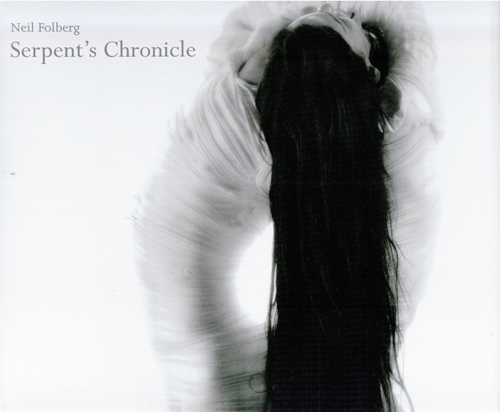
Serpent’s Chronicle by Neil Folberg; Abbeville Press Publishers, (c) 2013; IBN 978-0-7892-1138-5; 84 pages; $29.95
By Donald H. Harrison

SAN DIEGO– In Serpent’s Chronicle, his new book of photographs, Neil Folberg recounts the story of Adam and Eve, but not as most people know the tale. His story is from the viewpoint of a serpent who also had eaten fruit from the Tree of Knowledge.
Having taken a bite of the forbidden fig (no, not an apple) even before Eve did, the serpent is able to watch (and even photograph) the unfolding drama with keen understanding as to what really is happening. And, in this version of the biblical story, the serpent is not the instigator of Adam and Eve’s original sin, but is instead–if you’ll pardon the cross-species reference–simply an observer, like a fly on the wall.
According to the serpent’s heightened understanding, Adam and Eve were never meant to remain in the Garden of Eden; it was always God’s plan to convert them into mortal beings and send them out into the world.
Folberg, who likes to use his camera as a narrative medium, engaged dancers Shai Partush and Renana Rendi of the Kibbutz Contemporary Dance Company to enact the roles of Adam and Eve. He traveled with them to a lush setting in Rosh Pina, Israel, to make the 34 color and black-and-white images that illustrate the book, all from what might be a snake’s point of view. (Remember, snakes can propel themselves up trees).
The book opens with a view of a place of lush green foliage. We follow the serpent on its journey to a fig tree of many trunks. The serpent discovers green figs lying on the ground, under the tree. The figs taste so very sweet and have a pronounced effect on the serpent. “I can see from one end of the world to the other, from the present throughout eternity: I can see you,” the creature declares.
In the garden, the serpent sees a man lying on his back. He is a fully formed, an adult yet still an embryo, not yet stirred to life. When the man arises, he looks for a companion. A woman is added to him, and initially they are joined back to back. (This is the image on the cover of the book). Eventually, they are sundered, and the serpent watches as they reunite. The tasteful, choreographed and photographed pose suggests love making.
From this point onward in the photographic images, Adam and Eve wear clothing. Joining them in their spiritual journey through wonderment, self-realization and exile, readers evidently ought not be distracted by the nudity that one often associates with their story.
Without outside inducement, Eve tastes the fig, and then offers it to Adam, who accepts. The realization comes over both of them that the universe is immense (we see some spectacular images of the heavens), but it is a place with which they no longer are at one.
Expelled from the earthly Paradise, Adam takes a diamond as a keepsake to remind himself of the brilliance of the place. However, he accidentally drops the diamond into a body of water, and bending over to scoop it up, sees that many other diamonds have also been dropped at this spot.
Perhaps he and Eve were not the first man and woman, after all!
Folberg is bold both in his rewrite of the biblical tale and in his production of the images with which he helps us conceptualize how the much-maligned serpent would have viewed these matters. Folberg’s photography is rich and many layered. It gives us the feeling that when it is in the hands of an expert, a camera, secretly, deep behind its lens, yearns to engage in expressive dance.
*
Harrison is editor of San Diego Jewish World. He may be contacted via donald.harrison@sdjewishworld.com
This sounds intriguing, fascinating and wholly original.. I will have to find a copy of the book!
Thank you,